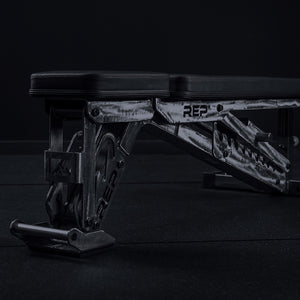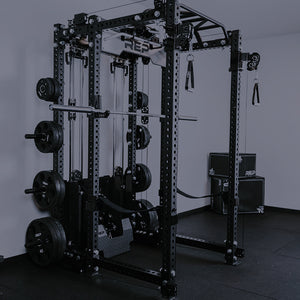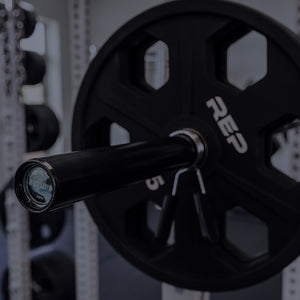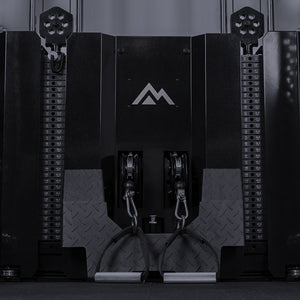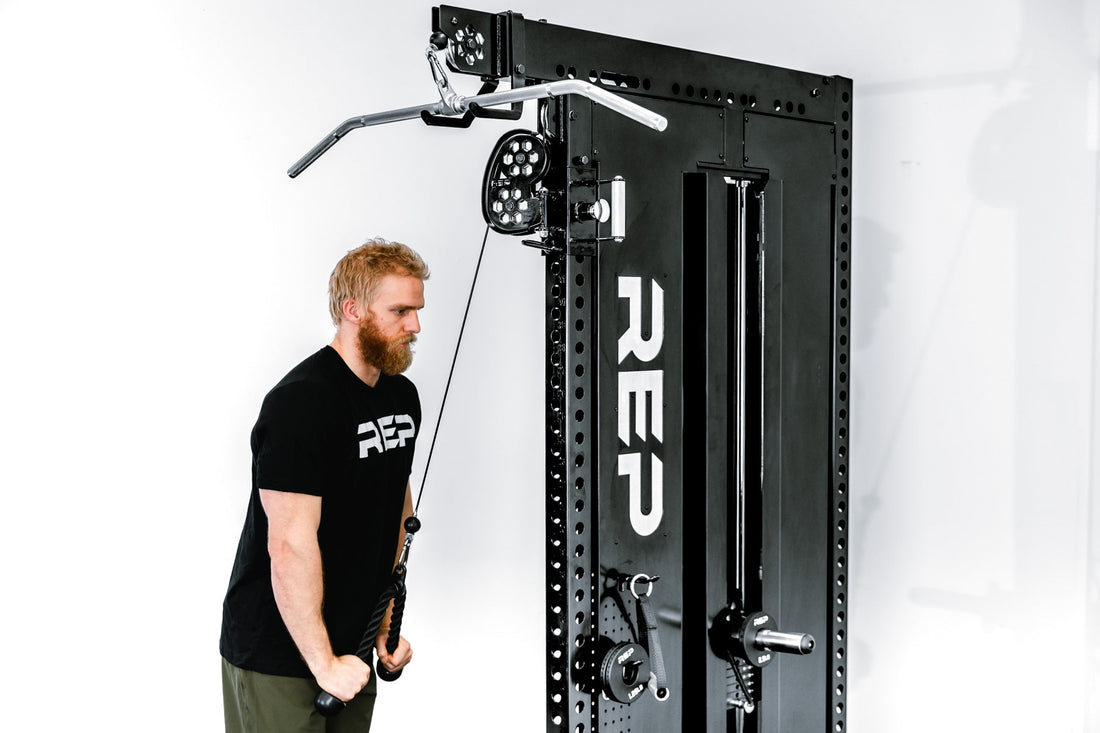
If it ever seems like you can lift way more weight on some machines than others, you’re not imagining it. You didn’t lose all your gains overnight (or suddenly have a superhero-level burst of strength). And one machine isn’t necessarily “better” than the other.
You’re just working out on cable machines with different pulley ratios.
The pulley ratio (or cable ratio) on a cable machine affects the resistance of the weight – how heavy it feels. You can route cables through pulleys in various ways to create different resistance and for different purposes. Here’s a look at what cable ratios mean and why that’s important.
What is a cable pulley ratio?
The number on the weight stack doesn’t tell the full story. Ten pounds doesn’t always equal 10 pounds.
The cable ratio (also called the pulley ratio) on your functional trainer indicates how the weight stack will feel – the actual resistance you will experience during the lift.
In the gym, you’ll see different pulley ratios, such as 1:1, 2:1, 3:1, and 4:1. The higher the ratio number, the longer the cable length – and the lower the resistance, as well as smaller resistance jumps between the weights. For example, a 4:1 ratio comes from a cable that’s four times the length of a 1:1 ratio.
The most common pulley ratios are 1:1 and 2:1, so we will focus on those here.
What is the difference between 1:1 and 2:1 pulley ratio?
A 1:1 ratio (also called a single-pulley machine) means 20lbs feels like 20lbs to move. On a single-pulley machine, the cable attaches to your handle, goes through one pulley (hence the name), and attaches to the weight stack (or weight plates if you are using a plate-loaded machine). What this looks like: For every foot you pull the handle, the weight also moves one foot upward.
A 2:1 ratio (also called a double-pulley machine) means 20lbs feels like 10lbs to move. It utilizes (you guessed it) two pulleys, and likewise, for every foot you pull the handle, the weight stack travels two feet upward; the reduced inertia means a faster-moving cable.
What are the benefits of a 1:1 ratio?
A 1:1 ratio is ideal for slower, strength-focused exercises, like heavy lat pulldowns and seated low rows.
What is a 2:1 ratio
A 2:1 ratio is best for functional training, when you want a faster-traveling cable. Think: more explosive exercises, jumps, quicker movements.
What is the best pulley ratio?
The best pulley ratio depends on your training goals. Are you focusing on faster movements? Look for a 2:1 cable machine, like the FT-5000 2.0. This is a stand-alone functional trainer with 21 cable positions, dual weight stacks, and a 2:1 ratio.
You can also find 2:1 cable machines that affix right onto your power rack to save space, like the Athena™ cable attachment. This is a low-profile cable attachment that attaches to the side of your PR-4000 or PR-5000 rack. It has a 2:1 pulley ratio and comes in both selectorized and plate-loaded options.
Or perhaps you are more interested in lifting heavy weight? You can attach a selectorized or plate-loaded lat pulldown and low row to your PR-4000, PR-5000, Omni, or Apollo ™ half rack. You can do a ton of exercises on a lat pulldown and low row attachment – not just lat pulldowns and low rows. Here’s a look at some of the other ways you can use this versatile cable machine.
Want both? You can have both.

The Adonis™ cable tower offers both options for ultimate versatility. It has the 1:1 ratio attached to a lat pulldown and low row component, and a 2:1 ratio functional trainer -- all in one machine, integrated together without needing a special accessory to achieve this (like a banana clip). Most machines are one or the other, but with the Adonis™ tower, you have one weight stack doing the work of two.
In addition, you can use the Adonis™ cable tower as a stand-alone unit or attach it to a 4000 or 5000 Series power rack or rig to save space. The Adonis™ cable tower is also compatible with the Modular Storage System, so you can build customized, smart storage right onto the functional trainer.
Still unsure which functional trainer to choose? Here’s our guide: How Do I Choose a Cable Machine?
Benefits of a Cable Machine
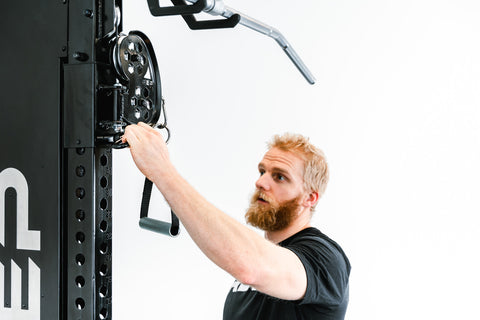
Of course, free weights will always be a gym staple that can’t be replaced. They offer:
- versatility (kettlebells, dumbbells, barbells);
- a broad weight range;
- a more affordable price point (or you can slowly build your set over time);
- the ability to target muscle imbalances;
- an easy add-on to cardio/agility/HIIT work;
- a small footprint, especially if you go with an adjustable dumbbell.
But there are a ton of benefits of a cable machine, too. Here are a few reasons to add a functional trainer to your home or commercial gym:
1. Safety
Especially with a selectorized machine, the weight stacks are attached to the machine and can’t land on an innocent toe. It’s easier to injure yourself bailing from a barbell lift than a similar move on a cable machine. Just let go of the handle, if you find yourself in a bad position. No need to have a spotter, barbell collars, or safeties.
2. Isolating muscle groups
While a barbell is amazing for full-body, compound lifts, you can really focus in one single a muscle group on a cable machine.
3. Constant tension
One reason bodybuilders love cable machines is they provide constant tension on the muscles. There’s no rest; it’s easy to work both the eccentric and concentric part of a lift.
4. Versatility
Create a ton of options by changing the angle, height, and attachments. Beginners and advanced lifters can both benefit from the same functional trainer. You can train your full body on a functional trainer.
5. Organization
A cable machine is easy to organize, especially ones with built-on pegboards, attachment horns, weight horns, and storage systems. You’ll want a system for your attachments/handles, but compared to other gym equipment, these guys are low maintenance and easy to keep organized.
6. Easy to use
Even for newbies, a functional trainer is easy to use. Swapping attachments and weight amounts is self-explanatory.
7. Efficiency
It’s effortless to switch the pin to change the weight and doesn’t take up much time. Especially if you’re lifting with a buddy, it can be time-consuming to switch out weight plates on a barbell. If you’re in a time crunch, you can blast through a cable workout quickly.
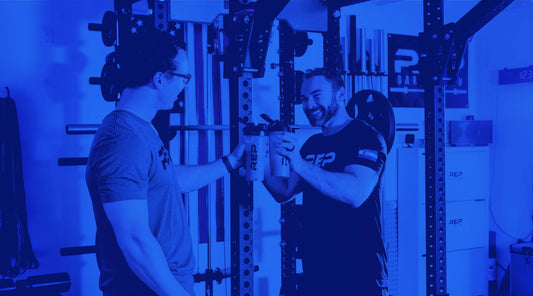
NEWSLETTER SIGNUP
Product launch information, promotions, blogs, and REP news.

